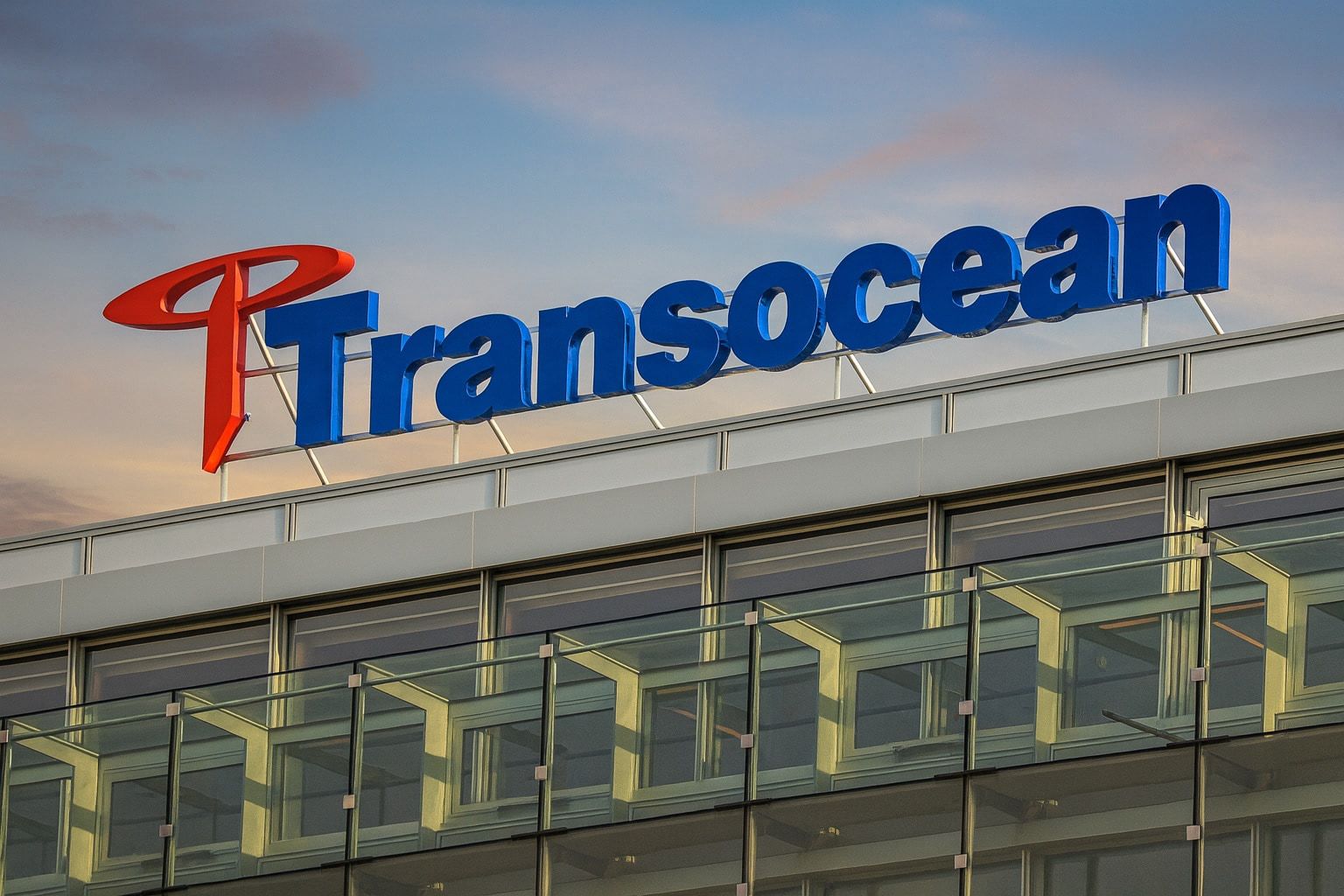- Stock surge: Transocean (NYSE: RIG) shares jumped sharply in mid-late October 2025. The stock closed around $3.89 on Oct. 24 [1], up from roughly $3.30 one week earlier. In fact, RIG gained about +19% over the past 5 trading days and roughly +6.6% in the last month [2]. Its one-day surge on Oct 23 (+13.1%) put the stock back near its 52-week high (~$4.74) [3] [4].
- Insider confidence: A key catalyst was a rare insider buy. Transocean board member Frederik W. Mohn (a prominent Norwegian oil heir) purchased 4 million shares (~$12.2M) in late September [5]. Industry analysts noted this “highly unusual” move and strong conviction in RIG [6], as it boosted Mohn’s stake above 10% and signaled insider confidence at current prices.
- New contracts: On Oct. 1 Transocean announced $243 million in new drillship contracts [7]. These include a 365-day extension for the Deepwater Atlas (Gulf of Mexico) at about $635k/day, and a 30-day extension for the Deepwater Mykonos in Brazil [8]. Together they add roughly $243M to Transocean’s backlog. Management reports total backlog of about $6.7 billion as of mid-October [9], underpinning revenue visibility.
- Balance-sheet moves: Transocean has been aggressively raising cash and cutting debt. In late September it sold 125 million new shares at $3.05 (raising ~$381M) – notably all purchased by existing shareholders including Mr. Mohn [10]. In mid-October the company issued $500M in new secured notes (due 2032) and launched a cash tender offer for existing bonds, increasing the repurchase limit from $50M to $100M [11] [12]. CEO Keelan Adamson has pledged to “reduce our debt by over $700 million this year” [13], using proceeds to pay down expensive notes.
- Asset sales and impairment: As part of fleet optimization, Transocean is disposing of older assets. In August it announced plans to scrap five stacked rigs, generating a ~$1.9 billion non-cash impairment charge in Q3 2025 results [14]. Management says this streamlines the fleet toward newer, high-specification drillships. The write-down will deepen the reported loss but remove underperforming rigs from the balance sheet.
- Q3 earnings on deck: Transocean set Oct. 29, 2025 (after market close) to release its Q3 results [15], with a conference call on Oct. 30. Investors will watch for updated guidance, utilization rates, and any notes on contract awards and cost savings. Given the new contracts and continuing vessel utilization, analysts expect revenues to grow year-over-year.
- Analyst outlook: Wall Street is cautiously optimistic. The average 12-month price target is around $4.20–$4.30 per share – roughly 25–30% above current levels [16] [17]. This implies significant upside if management executes on its recovery plan. Among analysts, most rate RIG a Hold, with a few bullish “Overweight” calls. For example, Barclays recently raised its target to $4.00 (Overweight), while Bank of America lifted its target to $3.00 (but kept an Underperform rating) [18] [19]. In summary, Wall Street consensus sees Transocean’s fair value in the low-to-mid $4’s [20] [21], though one analyst quipped that “Transocean offers a unique opportunity…especially in a rising oil price environment” [22].
Insider Buying and New Deals
Transocean’s recent rally was ignited by concrete news. As noted, Frederik Mohn’s $12M stock purchase was a signal to the market [23]. Shortly before that, the company announced the two deepwater drillship extensions described above. The Atlas (U.S. Gulf) was booked for 365 days at a firm dayrate, and the Mykonos (Brazil) for 30 days [24]. These awards alone add ~$243M to backlog, which management reports at about $6.7B [25]. In context, this year’s backlog has held up well (versus ~$7.2B at Q2’25) – reflecting ongoing demand for modern deepwater rigs. The new contracts came on top of recent drilling awards in Angola, Australia and elsewhere, signaling an uptick in offshore project spending.
Debt Refinancing and Financial Cleanup
Much of the recent news has centered on Transocean’s balance sheet. The equity raise (125M shares) and bond issue ($500M) in September-October were used to pay down high-interest debt [26] [27]. Management also repurchased older notes via a tender offer (increasing the size from $50M to $100M) [28]. The goal is to reduce near-term maturities and interest costs. As CEO Adamson put it, “we continue to improve our balance sheet and are on track to reduce our debt by over $700 million this year” [29]. These moves initially depressed the stock (new shares were issued at an ~11% discount) [30], but have since been viewed positively as deleveraging.
Fleet Strategy and Impairment
Transocean is also cutting less-used assets. In August it earmarked five older rigs for disposal, booking a ~$1.9B impairment in Q3 results [31]. Those rigs (e.g. Discoverer Clear Leader, Deepwater Champion, etc.) are now classified “held for sale” [32]. The move recognizes that demand for ultra-deepwater rigs is rising, while the markets for older floated rigs are limited. By writing off these assets, Transocean can focus capital on its newer, higher-spec fleet – a strategic “high-grading” that analysts believe will improve utilization and margins over time [33].
Recent Stock Performance and Metrics
Transocean’s share price has rebounded strongly. After trading as low as ~$3.14 in late September, RIG climbed to $3.89 by Oct. 23 [34]. (According to Reuters, RIG was “trading higher” at $3.89 on Oct. 24 [35].) This puts the stock near its 52-week high of $4.74 (set last November) [36]. The 1-week gain is ~19%, reflecting the news flow; even over 1 month it’s up about 6.6% [37]. MarketBeat data shows RIG’s 5-day performance at +19.05%, 1-month +6.60% [38], and year-to-date about +3.3%.
From a technical standpoint, this rebound has brought the stock above key moving averages. Trading volume has spiked on the news: Oct. 23 saw over 132 million shares trade [39], far above the single-day average (~60M). Analysts note RIG’s valuation is still low: it trades at roughly 0.3x book value (a steep discount to other energy companies at ~4x) [40]. This suggests the market is still wary of Transocean’s debt, even as fundamentals improve.
Analysts and Forecasts
Financial analysts remain mixed but show rising confidence. As noted, the consensus price target is roughly $4.20–4.30 [41] [42], implying about +25–30% upside from today’s levels. Most analysts rate RIG a Hold/Market-Perform – they acknowledge progress but cite high leverage. For example, Bank of America recently raised its target to $3.00 (from $2.50) but kept an Underperform rating, signalling caution [43]. In contrast, Capital One Financial’s D. Becker (via MarketBeat) has an Overweight rating and modestly bullish earnings estimates for 2025-26 [44].
Many experts point to Transocean’s catalysts: new contracts, shrinking debt, and an improving offshore cycle. One analyst wrote that insiders’ buying and fleet high-grading “sets a compelling foundation for stronger EPS growth – especially in a rising oil-price environment” [45]. Consensus estimates show Transocean roughly breaking even in 2025-26, with EPS near $0.10 by 2026 [46]. If oil and utilization recover as hoped, any small positive swing in earnings could translate into a meaningful stock move from current ~$3 levels.
Industry and Energy Market Context
Transocean’s outlook depends heavily on the broader offshore oil market, which has been improving. Oil prices are moderating after a mid-year rally. Brent crude was about $63/barrel in mid-October [47]. Recent OPEC data show global demand growing (an estimated +1.3 million barrels/day in 2025 and more in 2026 [48]), but also an oversupply risk as OPEC+ unwinds cuts [49] [50]. In fact, OPEC+ has been pumping more oil in late 2025, narrowing the market deficit [51]. Even so, major oil companies (like ExxonMobil) expect a tighter market longer-term, as low-capex and supply discipline eventually bite [52].
In the drilling sector, U.S. onshore activity has been flat to down. Baker Hughes reports the total U.S. rig count fell by 2 rigs in early October to 547, still 7% below year-ago levels [53]. (Oil rigs specifically dropped to 418). Lower onshore activity is partly offset by renewed interest in deepwater projects abroad. Industry analysts (Evercore, Rystad, etc.) note that many deferred offshore projects are coming back into play. Day rates for high-spec drillships have risen into the low-to-mid $500,000/day range in some regions [54]. Utilization of premium floaters and semisubmersibles is now in the high 80’s to low 90’s percent [55]. Simply put, the offshore rig supply has shrunk (new builds are scarce and reactivations slow), so a pickup in oilfield development leads quickly to higher rates [56].
Regulatory factors also feed into the picture. In early October, a U.S. court struck down the Biden administration’s broad ban on new offshore drilling on federal lands [57]. This makes it more likely that future oil and gas lease sales will open up areas previously off-limits (East/West Coast, northern Gulf, Alaska). Such policy shifts could benefit offshore drillers in the longer term, though new projects will still face strict environmental reviews.
Analyst Commentary – Bullish to Cautious
Overall, industry observers strike a guardedly optimistic tone. Transocean is seen as a cyclical turnaround story: if oil markets firm and contracts roll in, the stock could unlock real value. According to one strategist, “years of underinvestment and a focus on energy security continue to drive a multi-year growth period” in offshore drilling [58]. In fact, pre-Q3 reports by Evercore ISI and others argue that the offshore drilling sector is in the early stages of a multi-year upcycle, with many new field developments now sanctioned [59]. They note that the “Big 3” drillers (Transocean, Noble, Valaris) all reported improved dayrates and higher backlog in recent quarters [60].
However, analysts also warn of risks. Transocean’s debt is substantial, and if oil prices fall or projects are delayed, the stock could easily pull back. Capital discipline among oil majors means any sudden drop in crude demand could stall offshore work. The $1.9B impairment is a reminder that Transocean’s results are still volatile. Thus far, however, market sentiment has shifted positive, boosted by the visible actions (insider buy, new deals, debt paydown). In the words of one market researcher, RIG’s recent rally “shows strong conviction” among those closest to the company [61].
Outlook
Transocean’s next big event will be the Q3 earnings release on Oct. 29 (after market). Investors will look for signs of revenue growth, cost savings, and guidance on utilization. If the company can demonstrate continued backlog additions and stable dayrates, analysts expect the stock could move higher. Meanwhile, energy markets remain choppy: any major change in oil price (up or down) could swing sentiment.
In summary, Transocean has a mixed picture: solid growth in backlog and improved market conditions are positive, but high leverage and cyclical risks temper expectations. The recent insider buy and contract wins have clearly energized investors, and the stock now trades up ~25% from its late-September lows. With analysts’ average targets in the low-$4’s, there is room for further gains if Transocean’s turnaround plan succeeds [62] [63]. The offshore drilling industry’s upswing appears to be gaining traction, and Transocean is positioned to benefit – making it a name many market watchers are watching closely.
Sources: Transocean press releases [64] [65] [66] [67]; Market data and analysis (Reuters, MarketBeat) [68] [69] [70]; Financial news (TS2 Tech, CoinCentral, Investing.com) [71] [72] [73] [74]; Industry reports (Reuters OPEC, Baker Hughes, Offshore Magazine) [75] [76] [77] [78].
References
1. www.reuters.com, 2. www.marketbeat.com, 3. www.marketbeat.com, 4. www.reuters.com, 5. ts2.tech, 6. ts2.tech, 7. www.deepwater.com, 8. www.deepwater.com, 9. www.deepwater.com, 10. ts2.tech, 11. www.deepwater.com, 12. ts2.tech, 13. ts2.tech, 14. www.ainvest.com, 15. www.deepwater.com, 16. ts2.tech, 17. coincentral.com, 18. ts2.tech, 19. coincentral.com, 20. ts2.tech, 21. coincentral.com, 22. ts2.tech, 23. ts2.tech, 24. www.deepwater.com, 25. www.deepwater.com, 26. ts2.tech, 27. ts2.tech, 28. www.deepwater.com, 29. ts2.tech, 30. ts2.tech, 31. www.ainvest.com, 32. www.ainvest.com, 33. ts2.tech, 34. www.marketbeat.com, 35. www.reuters.com, 36. www.reuters.com, 37. www.marketbeat.com, 38. www.marketbeat.com, 39. www.marketbeat.com, 40. ts2.tech, 41. ts2.tech, 42. coincentral.com, 43. ts2.tech, 44. ts2.tech, 45. ts2.tech, 46. ts2.tech, 47. www.reuters.com, 48. www.reuters.com, 49. www.reuters.com, 50. www.reuters.com, 51. www.reuters.com, 52. www.reuters.com, 53. www.reuters.com, 54. www.offshore-mag.com, 55. www.offshore-mag.com, 56. www.offshore-mag.com, 57. www.reuters.com, 58. www.offshore-mag.com, 59. www.offshore-mag.com, 60. www.offshore-mag.com, 61. ts2.tech, 62. ts2.tech, 63. coincentral.com, 64. www.deepwater.com, 65. www.deepwater.com, 66. www.deepwater.com, 67. www.deepwater.com, 68. www.reuters.com, 69. www.marketbeat.com, 70. www.reuters.com, 71. ts2.tech, 72. coincentral.com, 73. www.investing.com, 74. www.investing.com, 75. www.reuters.com, 76. www.reuters.com, 77. www.offshore-mag.com, 78. www.reuters.com







